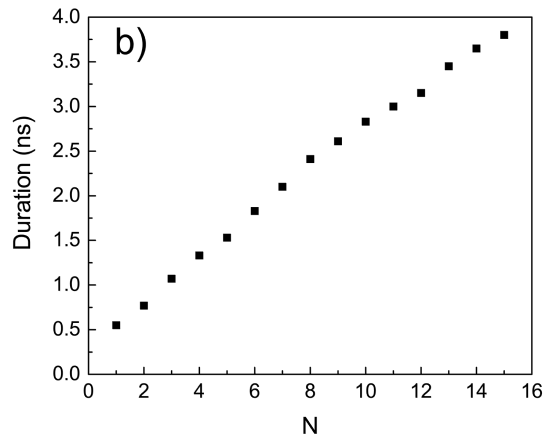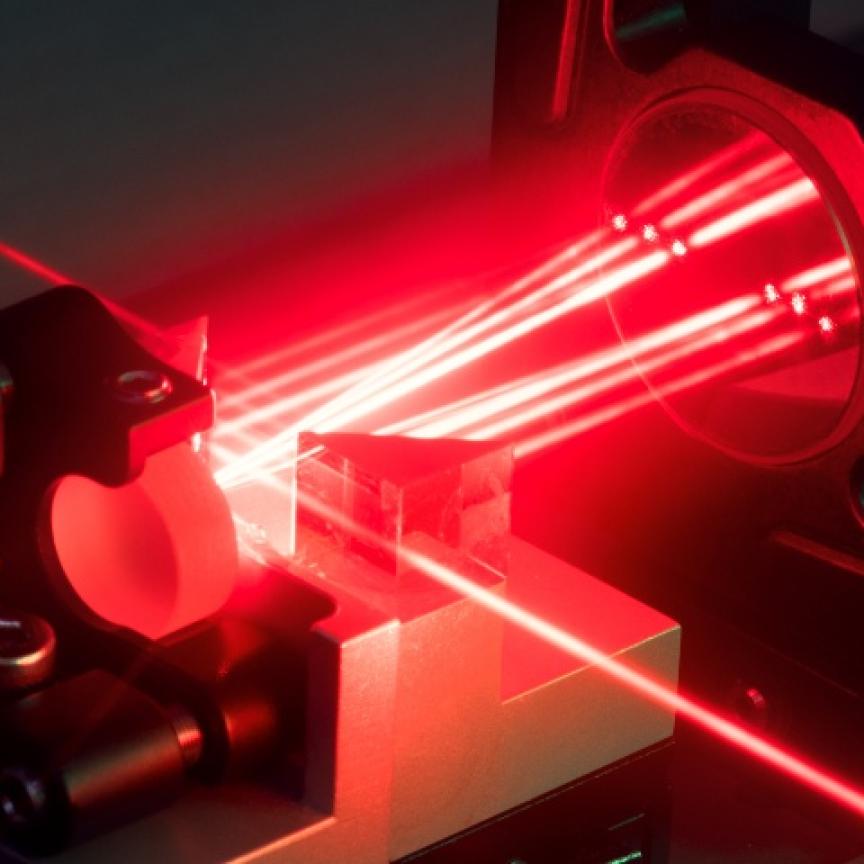Deividas Andriukaitis and Tadas Bartulevičius, of Ekspla, share how new Active Fiber Loop technology offers GHz burst generation that makes femtosecond lasers more versatile than ever
Ultrafast lasers have demonstrated remarkable superiority in material micromachining. In particular, femtosecond lasers are highly valued in micromachining applications that require exceptional process quality. Their ultrashort pulse duration enables them to avoid the formation of heat-affected zones, meeting high-quality requirements [1]. However, achieving the best quality requires the precise optimisation of laser parameters. Considering the diverse range of materials used in industrial processing, the femtosecond laser must offer a flexible parameter range to be well-suited for various industrial applications.
Flexibility in GHz burst generation
Nowadays, there is a wide variety of ultrafast lasers available, offering different operation modes, with the most common being the single-pulse mode. These lasers produce kHz-MHz pulse repetition rates and are extensively used in micromachining tasks, however, one of their drawbacks is the throughput. To address this, researchers have explored the concept of grouping single pulses into packets with repetition rates in the MHz/GHz range.
While some publications have presented the usage of bursts to increase ablation efficiency, further research is still needed to fully understand their potential benefits [2,3]. Currently, the ultrafast laser market mainly provides MHz, short GHz (up to twenty pulses), or long GHz (up to thousands of pulses) bursts. One of the main bottlenecks in conducting comprehensive burst research is the limited availability of laser sources offering a wide range of burst configurations.
Ekspla’s engineers have approached this challenge by developing an all-in-fibre solution called Active Fiber Loop (AFL), the schematic setup of which is visualised in Figure 1.

Figure 1: Schematic setup of the Active Fiber Loop. AOM1-3 (acousto-optical modulators); FC (fibre coupler); CIRC (optical circulator); YDF (ytterbium-doped fibre); CFBG (chirped fibre Bragg grating); LD (single-mode laser diode); PF (passive optical fibre); IN1,2 (input ports); OUT1,2 (output ports)
It is composed of these main components: acousto-optical modulators (AOM) to select the number of pulses in the burst; ytterbium doped fibre (YDF) to compensate the round-trip loss, and chirped fibre Bragg grating (CFBG) to compensate the dispersion. The bursts are formed by splitting and delaying pulses from the MHz master oscillator in the loop. After each round-trip in the loop, the delayed replicas from previous cycles add to an undelayed replica of the next input pulse [4]. In such a way, it is possible to operate in three different regimes (as shown in Figure 2): MHz burst, short GHz burst (22-22 pulses), long GHz burst (44-1,100) and burst-in-burst (GHz bursts within MHz burst) regimes.

Figure 2: The different possible burst configurations offered by Ekpla’s FemtoLux 30 laser. (left) short GHz burst, (middle) long GHz burst, and (right) burst-in-burst (GHz burst in MHz burst) regime
Pulse duration tuning: from femtoseconds to nanoseconds
AFL technology is versatile, it can be used not only in GHz burst formation but also to tune the pulse duration. By controlling the chirped fibre Bragg grating inside the AFL, it is possible to add additional dispersion and stretch the pulses in time during each round trip. In a study by T. Bartulevičius et al., the pulse duration tunability was realised. After 15 round trips in the AFL, the pulse duration was tuned from initial 300fs to 4ns (FWHM) (see Figure 3) [5].

Figure 3: Dependence of pulse duration on the number of round-trips inside the AFL by using a CFBG pulse stretcher [4]
The flexibility in tuning pulse duration can be beneficial in some applications, for example, nanoparticle generation [6]. One of the advantages of AFL is that pulse duration tunability can be combined with GHz burst formation. This opens up new study possibilities on how these parameters affect the material processing quality.
Conclusion
Femtosecond lasers have gained significant attention for their exceptional material processing quality, but achieving optimal results requires a flexible parameter range. In this article, we've introduced new Active Fiber Loop (AFL) technology, which offers versatile GHz burst generation, enabling operation in three regimes: MHz burst, short GHz, and long GHz burst regimes. Also, the technology can be realised in wide pulse duration tunability – from femtoseconds to nanoseconds, which is required for some applications. AFL technology is making femtosecond lasers more versatile than ever, opening new possibilities for various applications.

Deividas Andriukaitis is OEM Laser Sales Manager and Tadas Bartulevičius is an R&D Engineer at Ekspla
--
References
- K. Sugioka, “Will GHz burst mode create a new path to femtosecond laser processing?,” International Journal of Extreme Manufacturing, 3(4), 043001 (2021).
- C. Kerse, H. Kalaycıoğlu, P. Elahi, B. Çetin, D. K. Kesim, Ö. Akçaalan, S. Yavaş, M. D. Aşık, B. Öktem, H. Hoogland, R. Holzwarth, and F. Ö. Ilday “Ablation-cooled material removal with ultrafast bursts of pulses,” Nature, 537(7618), 84–88 (2016).
- D. Metzner, P. Lickschat, and S. Weißmantel, “Optimization of the ablation process using ultrashort pulsed laser radiation in different burst modes,” J. Laser Appl. 33(1), 012057 (2021).
- T. Bartulevičius M. Lipnickas, V. Petrauskiene, K. Madeikis, and A. Michailovas,, “30 W-average-power femtosecond NIR laser operating in a flexible GHz-burst-regime”, Opt. Express 30(20) (2022).
- T. Bartulevičius, M. Lipnickas, K. Madeikis, R. Burokas, A. Michailovas, “Versatile ultrashort pulse laser tunable up to nanosecond range,” Proc. SPIE 12399, 1239904 (2023).
- C.-Y. Shih, M. Shugaev, C. Wu, and L. Zhigilei “The effect of pulse duration on nanoparticle generation in pulsed laser ablation in liquids: Insights from large-scale atomistic simulations,” Physical Chemistry Chemical Physics, 22(13) (2020).


